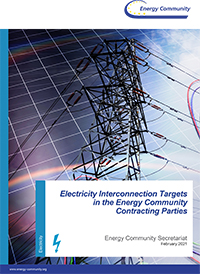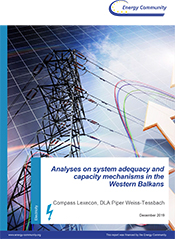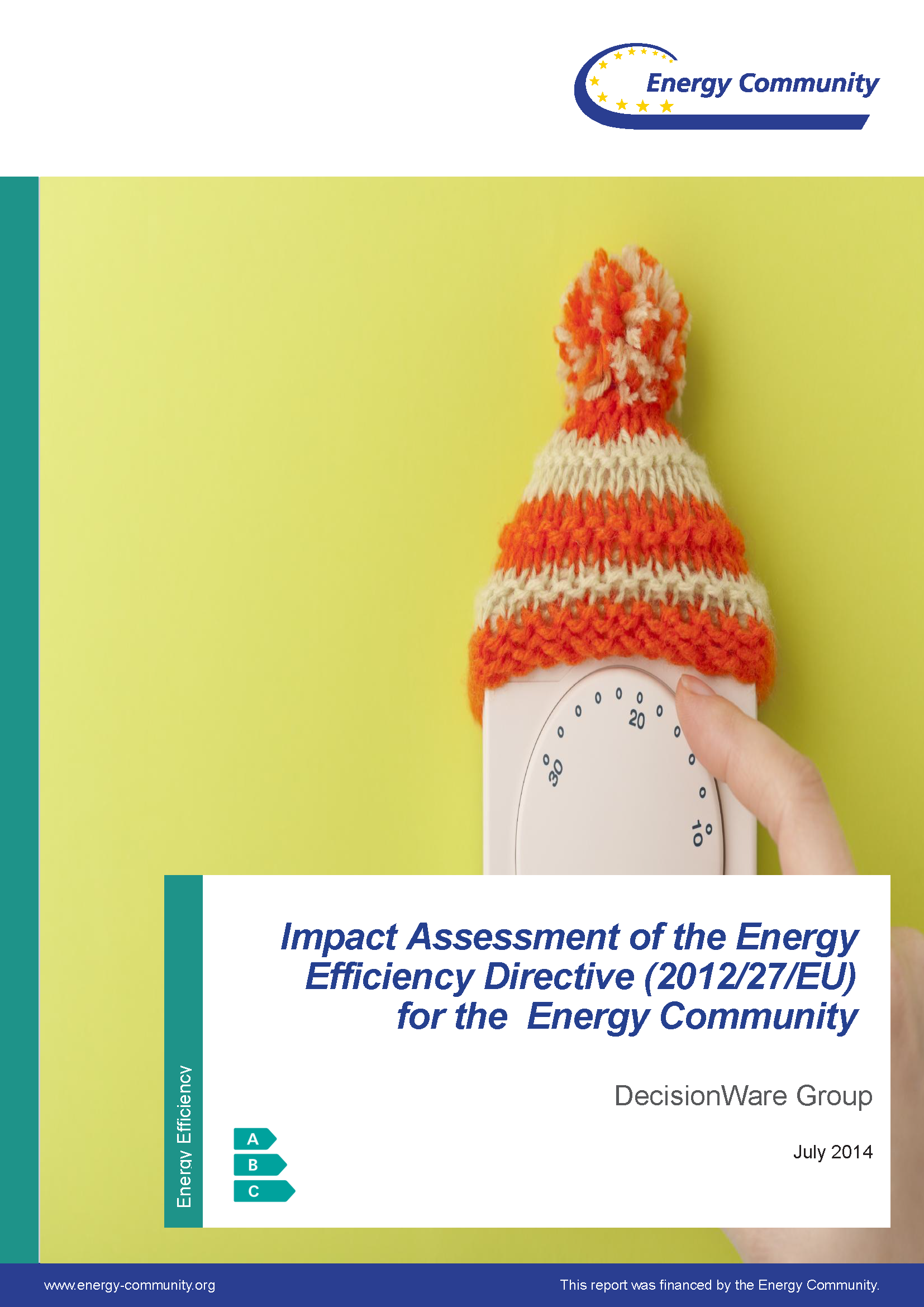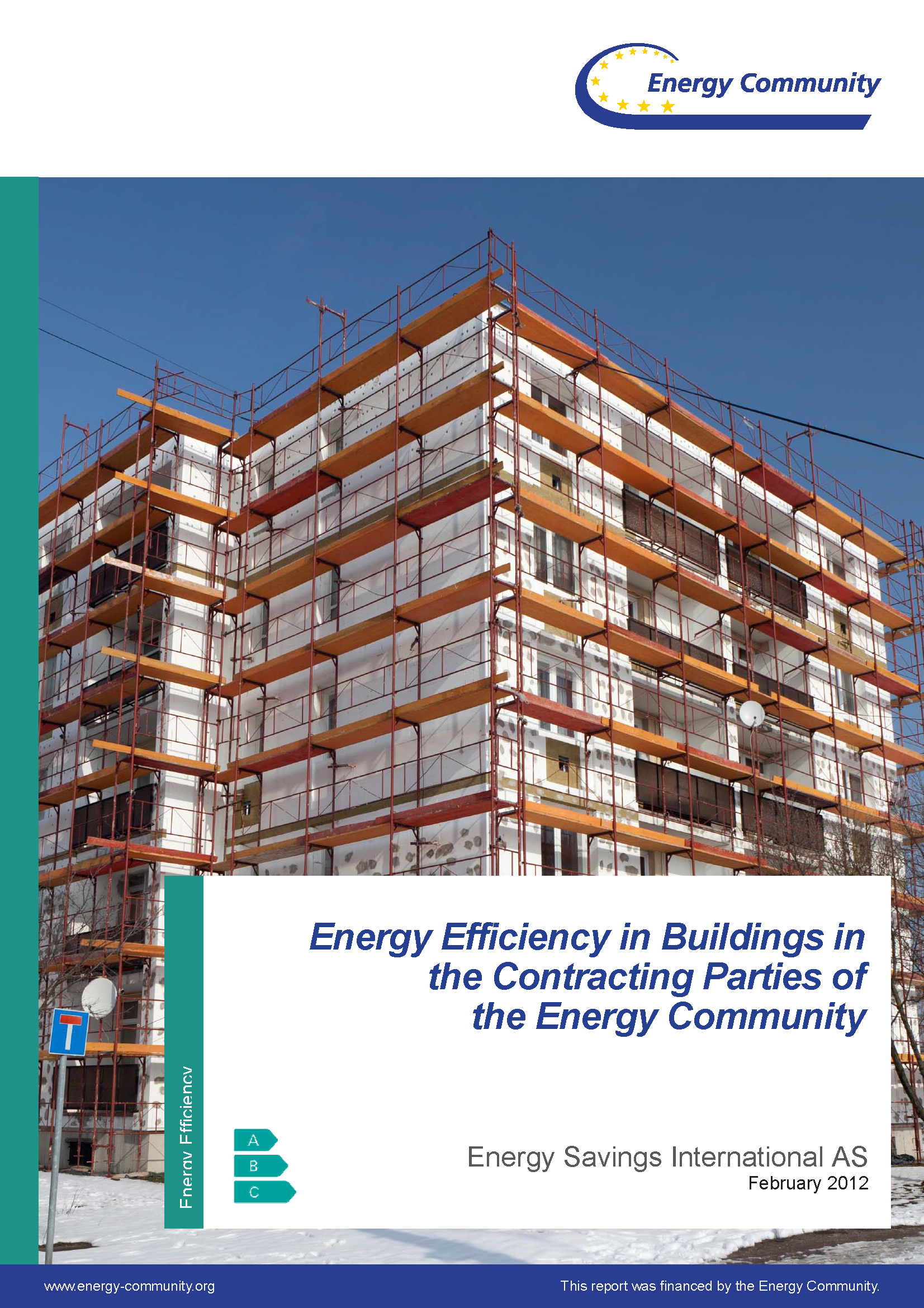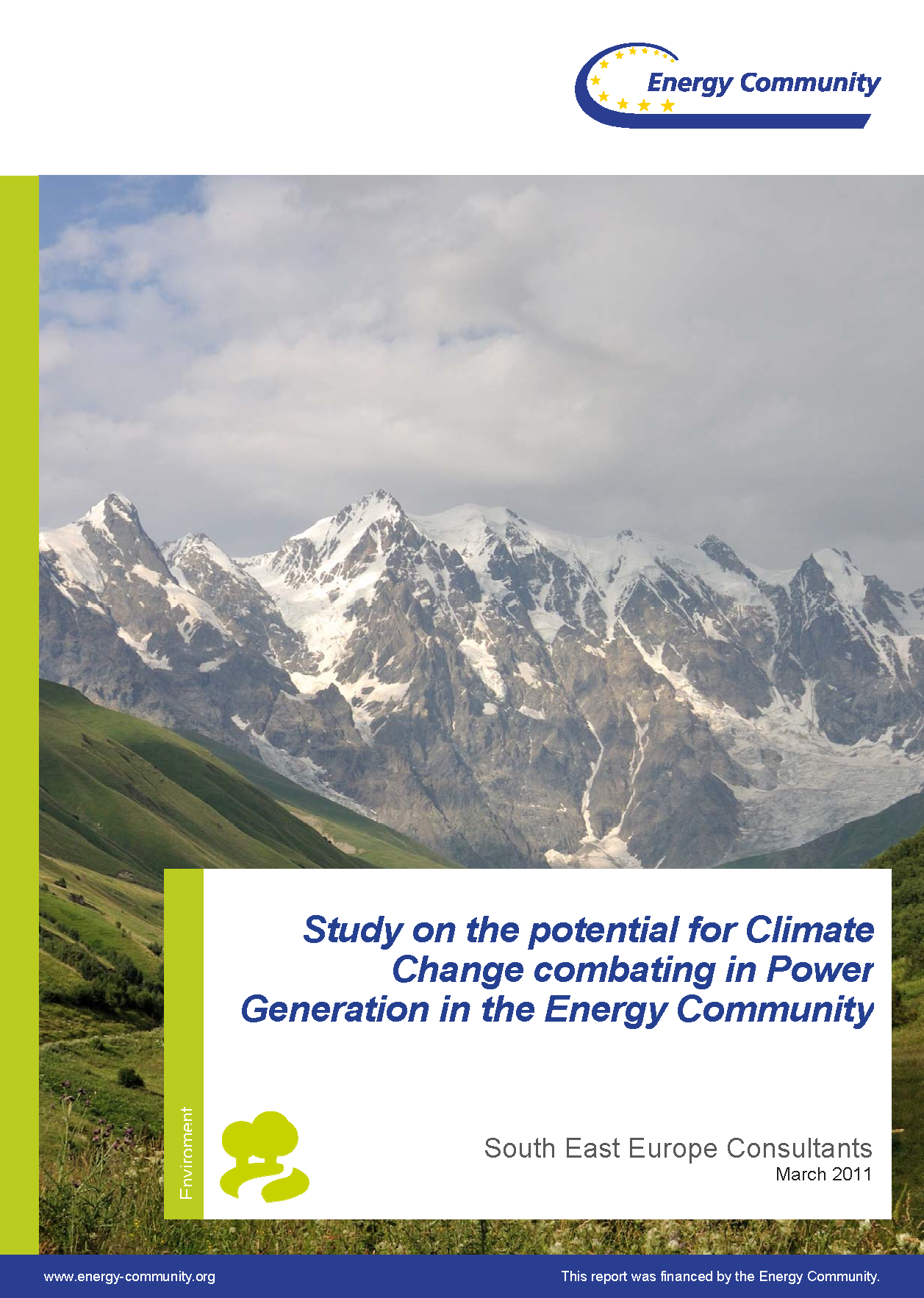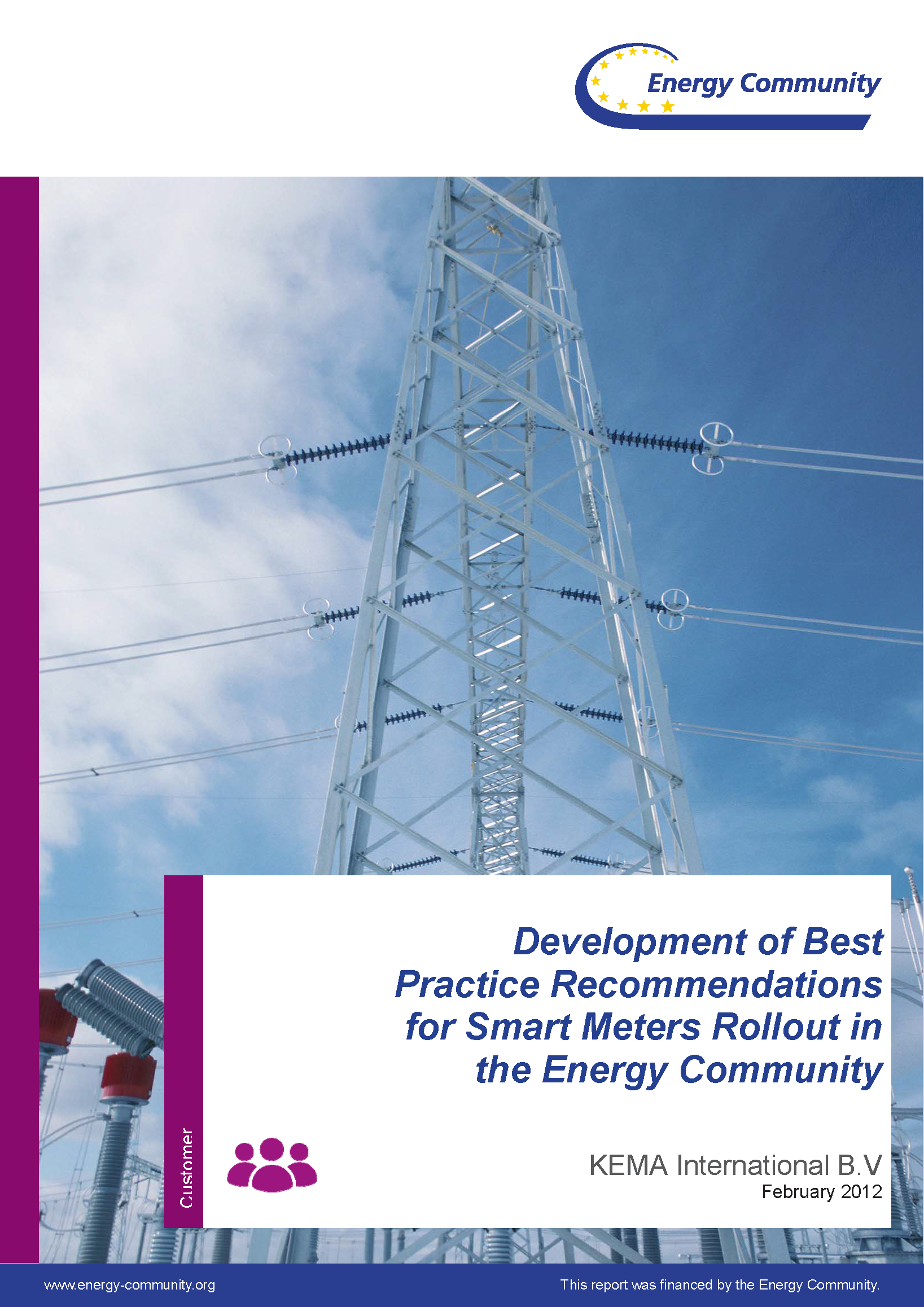This section features the studies tendered and financed by the Energy Community Secretariat. The chosen research topics reflect the objectives set in the organisation's Work Programme. In few occasions the Secretariat itself conducted the study. The findings of the final reports, in return, contribute to the work of the Energy Community.
This page displays the 20 most recent studies. With the total of 60 studies conducted since 2007, the Secretariat released two studies in 2023 and so far one in 2024.
Studies by areas of work
Electricity
-
10/2023: 70% Target for electricity interconnection capacities
October 2023: Study on 70% target for electricity interconnection capacities 70% target for electricity interconnection capacities
With the adoption of Decision 2022/03/MC-EnC, the Ministerial Council incorporated the Electricity Integration Package in the Energy Community in December 2022. With a transposition deadline of 31 December 2023, this package encompasses nine legal acts, incorporating also Regulation (EU) 2019/943. As a result, the TSOs of Contracting Parties are obliged to make available a minimum level of cross-zonal capacity considering operational security limits. This target, better known as the 70% target, aims at facilitating the implementation of a fully integrated and well-functioning European electricity market by enabling increased cross-zonal trade and exchange of electricity.
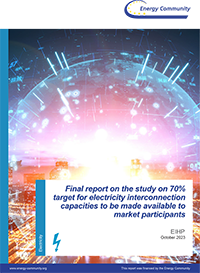
It is recommended that Contracting Parties prepare and adopt action plans to address shortcomings and opt for full compliance with the target by 31 December 2027 rather than derogations which should not be used to address structural problems. As concrete actions for improvement, it is highlighted that improving regional cooperation by operationalization of capacity calculation regions and coordinated capacity calculation methodology, moving from existing bilateral NTC to coordinated NTC, or even to flow-based approach, would increase available capacity as the system is already well connected.
-
09/2023: Analysis of Direct Subsidies to Coal and Lignite Electricity Production
September 2023: Analysis of Direct Subsidies to Coal and Lignite Electricity Production
This report analyzes the scale of direct subsidies in the Energy Community Contracting Parties that owned and utilized generation capacities and resources from coal and lignite in 2020: Bosnia and Herzegovina, Kosovo* , Montenegro. The report builds on previous researches and studies encompassing the periods from 2016 onwards.
All the five Contracting Parties provided direct subsidies to electricity generation from coal/lignite during 2021-2022, levelling to more than EUR 180 million. In absolute terms, the value of subsidies was the highest in Serbia (98,67 mill. EUR) and Bosnia and Herzegovina (70,14 mill. EUR).
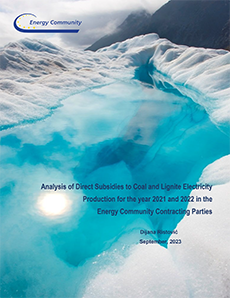
-
07/2022: Flexibility options to support decarbonization
July 2022: Study on flexibility options to support decarbonization in the Energy Community
The study assesses the flexibility needs and options to balance each Contracting Party’s power system on different time-scales (daily, weekly and annual) until 2030 and 2040 under different assumptions mainly linked to the speed of renewables uptake and level of market integration.
It identified that there will be no need for additional investments into flexibility sources until 2030 when variable renewables (wind and solar) might reach 30 GW. The study underscored the pivotal role of cross-border interconnectors and market coupling in providing the flexibility needed to enable higher penetration of renewables and decarbonisation in the Energy Community. Annualised investment needs/costs between 2030 and 2040 into additional flexibility sources will drop by as much as EUR 150 million if organised spot (day-ahead and intra-day) and balancing markets are coupled between the Contracting Parties and with the EU.

Market integration will also allow the absorption of an additional 5 TWh per year of variable renewable production from the EU that would otherwise be curtailed.The study concludes by setting out policy and regulatory recommendations to minimize overall system costs, including on energy sector governance, electricity market design, renewable energy development and carbon pricing. The Contracting Parties are recommended to define a flexibility strategy as part of their National Energy and Climate Plans (NECPs). -
07/2022: Analysis of Direct Subsidies to Coal and Lignite Electricity Production
July 2022: Analysis of Direct Subsidies to Coal and Lignite Electricity Production
This report analyzes the scale of direct subsidies in the six Energy Community Contracting Parties that owned and utilized generation capacities and resources from coal and lignite in 2020: Bosnia and Herzegovina, Kosovo* , Montenegro, North Macedonia, Serbia and Ukraine. The other three Contracting Parties, Albania, Moldova and Georgia, do not have coal-fired electricity generation capacity. The report builds on previous research and studies, encompassing the periods 2018 - 2019 (12/2020 coal report) and 2015 - 2017 (06/2019 coal report).
The report concludes that all six Parties provided direct subsidies to electricity generation from coal/lignite during 2020. These subsidies amounted to more than EUR 400 million. In absolute terms, the amount of subsidies was the highest in Ukraine, Serbia and Bosnia and Herzegovina.
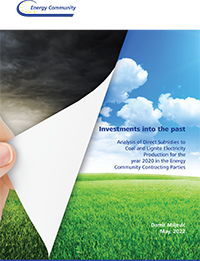
-
06/2021: Technical Assistance for the Connection Network Codes Implementation
June 2021: Technical Assistance for the Connection Network Codes Implementation
With the Decision 2018/04/PHLG-EnC, the following EU regulations were incorporated into the Energy Community acquis:
- Regulation (EU) 2016/631: Network Code on requirements for grid connection of generators;
- Regulation (EU) 2016/1388: Network Code on Demand Connection;
- Regulation (EU) 2016/1447: Network Code on requirements for grid connection of high voltage direct current systems and direct current connected power park modules.

In order to support the DSOs and TSOs to prepare and align their grid codes to the EU regulations, the Secretariat contracted technical assistance. The overall objective was to assist system operators in further implementation, through:
- setting the specific parameters left to be defined on a country level (TSO/DSO),
- drafting the provisions for respective DSO and TSO documents related to connection process and containing technical connection requirements and parameters,
- methodologies with rationale for selection of particular technical requirements/parameters to serve as the ground for justification in future public consultations,
- identification of connection issues and related business processes which affect both TSO and DSO and require their close collaboration.
As a final outcome, the technical assistance resulted in a series of reports:
- Report on identified non-exhaustive technical connection requirements to be set at national level and gap analysis on level of transposition (9 reports for each Contracting Party);
- Setting of methodologies for determination of non-exhaustive requirements (one consolidated report);
- Drafting the provisions for inclusion of non-exhaustive requirements in national legislation (9 reports for each Contracting Party);
- Mutual TSO and DSO connection issues and business processes.
The consolidated Contracting Party reports are displayed in the table below.
Filters:
Document Name Published on 16.06.202116.06.202116.06.202116.06.202116.06.202116.06.202116.06.202116.06.202116.06.2021- 02/2021: Electricity Interconnection Targets
February 2021: Electricity Interconnection Targets in the Energy Community
- 01/2021: A carbon pricing design for the Energy Community
January 2021: A carbon pricing design for the Energy Community
The aim of the study is to propose a carbon pricing mechanism for the time horizon until 2040, suitable for the decarbonisation of the power and district heating sectors in the Contracting Parties (CPs) of the Energy Community, considering the intrinsic political, economic and social context in these countries. The need to come up with a carbon pricing mechanism for the Energy Community turns out to be pressing for three most obvious reasons. First, almost half of all electricity produced in the CPs still comes from old and inefficient thermal power plants burning solid fossil fuels, i.e. lignite and coal, despite mounting costs, generation adequacy concerns, air quality deterioration and public health effects. Second, solids-firing generation remains artificially cheap due to distortionary policies that conceal the true cost of carbon and hamper competition and the transition to a low-carbon power market. 
Third, solids-based electricity from the CPs is leaking into the EU, undermining Europe’s climate policy and incentivising further the use of solids, i.e. coal and lignite, in the Energy Community. - 12/2020: Analysis of direct subsidies to coal and lignite electricity production 2018–2019
December 2020: An analysis of Direct Subsidies to Coal and Lignite Electricity Production 2018–2019
This report sheds light on the scale of direct subsidies in the six Energy Community Contracting Parties which own and utilize generation capacities and resources from coal and lignite: Bosnia and Herzegovina, Kosovo*, Montenegro, North Macedonia, Serbia and Ukraine. The report covers the period 2018–2019 and builds on previous research encompassing the 2015–2017 period. The World Trade Organization’s definition of subsidies was used to research, identify, calculate and describe subsidies.
The report revealed that all six Contracting Parties analysed provided direct subsidies to electricity generation from coal/lignite during 2018 and 2019. These subsidies amounted to more than EUR 900 million. In absolute terms, the subsidies were the highest in Ukraine, Serbia and Bosnia and Herzegovina. The report also uncovered the scale of state guaranteed loans, which amounted to almost 2 billion in 2019 alone.
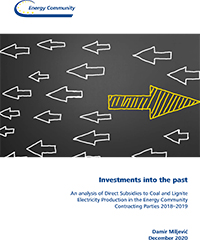
- 05/2020: Smart Grid opportunities in the Energy Community
May 2020: Smart Grid opportunities in the Energy Community, Scoping Study
As defined by the International Energy Agency, “a smart grid is an energy network that uses digital and other advanced technologies to monitor and manage the transport of energy from all generation sources to meet the varying energy demands of end-users”. The aim of smart grids is to maximize system reliability, resilience and stability and minimize costs and environmental impacts by coordinating the needs and resources of end-users and generation, grid and market operators. Since smart grids are mainly based on information sharing, the new information and communication technologies are their vital enabler.
This study is intended to give a snapshot of the current situation of smart grids and smart meter penetration in the Energy Community, based on responses to questionnaires prepared by the Secretariat in consultation with members of the ECDSO-E coordination group.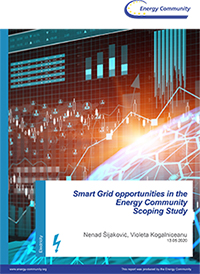
Having in view the current level of technological development in the Contracting Parties, the study pinpoints energy digitalization areas of most relevance and proposes concrete regional projects that could be eligible for technical and financial assistance. - 02/2020: Analysis on system adequacy and capacity mechanisms
February 2020: Analyses on system adequacy and capacity mechanisms in the Western Balkans
The electricity markets in the Contracting Parties are experiencing a period of complex transition, characterised by the coexistence of the liberalization and decarbonisation agendas. As a consequence, a number of plants could potentially retire, which raises security of supply concerns.
The results of this study show that an efficient energy-only regional market would bring the flexibility and adequacy required to maintain security of supply. Yet despite all progress, an efficient regional market mechanism is still not in place in the Western Balkans. Beyond delayed reforms, government actions such as non-compliant State aid distort operational and investments signals. Such State aid is often justified by the claim to maintain security of supply, a claim for which the present study in the current conditions does not provide support.
The authors of the study were asked to look into justifications for and modalities of potential capacity mechanisms. Without the energy market reforms completed and a functional and integrated energy-only market in place, there is little room for them. The study shows that the implementation of an immediate carbon price below the EU ETS would be a good transitional and non-critical measure to mitigate the risk of immediate closure of some of the power plants in the WB6 upon EU accession or the imposition of a carbon border price. - 06/2019: Analysis of direct and selected hidden subsidies to coal electricity production
June 2019: Analysis of Direct and Selected Hidden Subsidies to Coal Electricity Production
This final report is based on the analysis of direct and selected hidden subsidies to coal-based electricity production in the Energy Community Contracting Parties published by the Secretariat in March 2019 and the outcome of a subsequent public consultation.
It underlines the serious situation in the coal sector of the Energy Community Contracting Parties where direct subsidies amounted to EUR 1,2 billion in 2015-2017. On top of this, hidden subsidies, notably the non- payment of a carbon tax, totalled EUR 1,9 billion on an annual basis. In the three most coal intensive Contracting Parties (Bosnia and Herzegovina, Kosovo* and Serbia), coal subsidies were in absolute terms significantly higher than renewables support. The resulting market distortions and unsustainable consumption patterns are putting the region’s energy transition further at risk.
Following the publication, the Secretariat has continued to revise the study in order to incorporate improved data and new information. The latest summary of comments dates from September 2019.
Gas
-
06/2021: Study on the potential for implementation of hydrogen technologies and its utilisation
June 2021: Study on the potential for implementation of hydrogen technologies and its utilisation in the Energy Community
The Secretariat commissioned a study on the potential for implementation of hydrogen technologies and its utilisation in the Energy Community in September 2020. The driver behind this initiative is to kick-start a discussion on the potential hydrogen applications in the Contracting Parties, addressing the legal feasibility, economic and technological opportunities in connection with the European Union’s hydrogen activities. The study takes stock of ongoing activities, possibilities, potential pilot project areas. To be fit to enter into the multi-stakeholder endeavour of hydrogen applications also the legal framework in place was assessed. 
The Study is composed of three, interconnected reports:
- Synthesis Report
- International Review
- Economic Analysis
- Contracting Party assessment
Filters:
Document Name Published on 17.06.202117.06.202117.06.202117.06.2021- 05/21: Report on methane emissions by gas transmission and distribution system operators
May 2021: Report on methane emissions by gas transmission and distribution system operators in the Energy Community Contracting Parties
At present, gas system operators in the Energy Community do not have legal obligations to monitor, report or decrease their methane emissions. However, this sector has significant methane emissions reduction potential. Decreasing allowed network losses, setting minimum regular maintenance levels and fostering energy efficiency measures are some of the measures that could be explored.
This report is the outcome of the Secretariat's internal data collection project. Establishment of a baseline of methane emissions stemming from gas system operation activities is a precondition for any concrete, future emissions reduction action. The scope of the project also included joining the Methane Guiding Principles, to underline the Energy Community’s future direction in relation to methane emission policies.
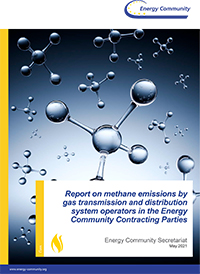
- 07/2018: Simulation for calculation of gas transmission tariffs in Serbia and Ukraine
July 2018: Simulation of capacity weighted distance reference price methodology for calculation of gas transmission tariffs in Serbia and Ukraine
The main objective of this project was to contribute to understanding of the effects of the Tariff Network Code (TAR NC)[1] implementation on the existing gas transmission tariffs in two selected Energy Community Contracting Parties, namely Serbia and Ukraine. Proper understanding of the possibilities delivered by the TAR NC should help all regulators to prepare for the legislative and regulatory challenges ahead in the field of gas transmission tariff setting.
[1] REGULATION (EU) 2017/460 of 16 March 2017 establishing a network code on harmonised transmission tariff structures for gas
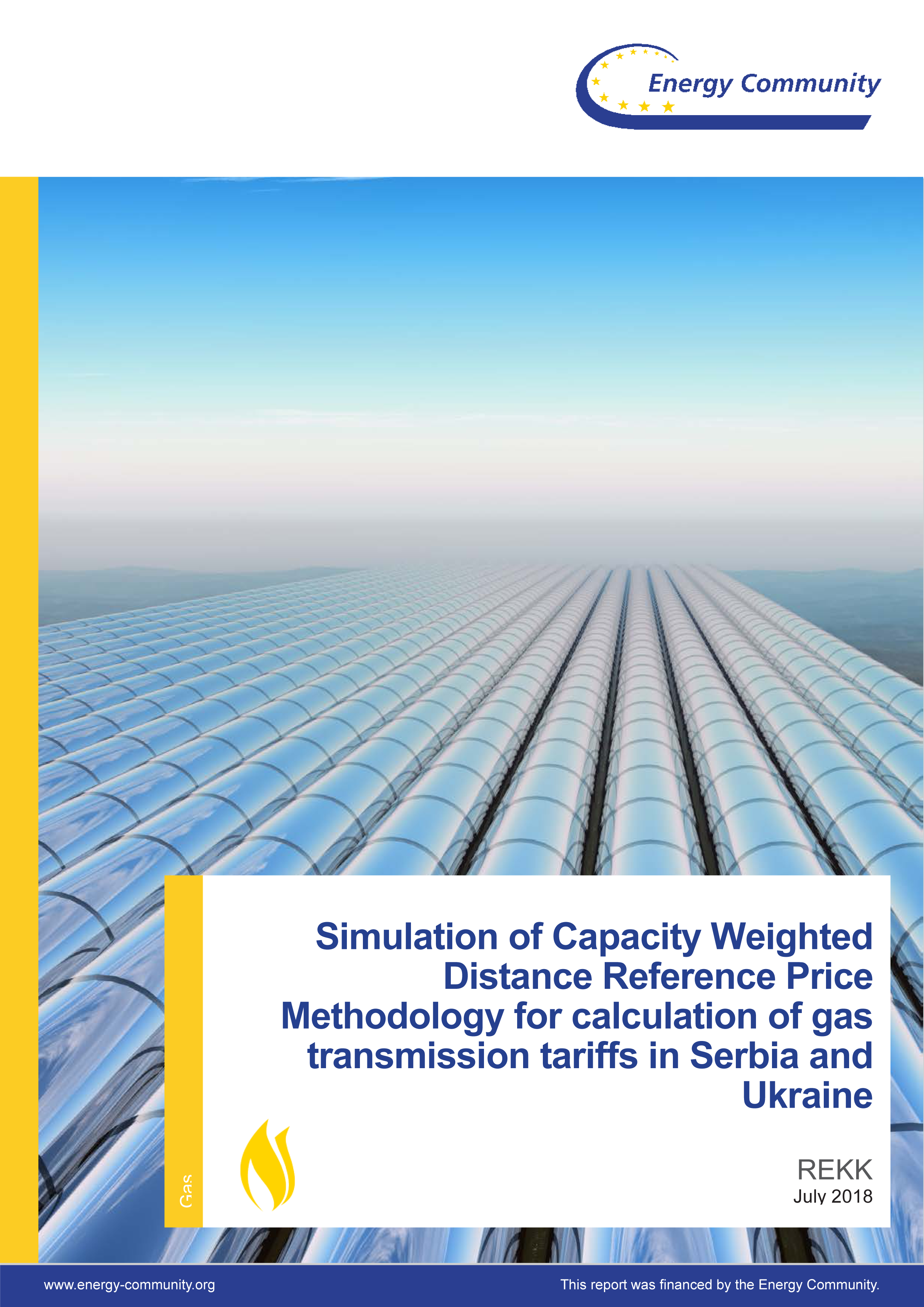
Infrastructure
-
06/2020: Assessment of candidate PECI and PMI projects
June 2020: Assessment of candidate Projects of Energy Community Interest and Projects for Mutual Interest
According to the adapted Regulation, the selected priority projects are labelled in two categories: Energy Community Interest (PECIs) and Projects of Mutual Interest (PMIs). PECIs are projects that connect two Contracting Parties, or a Contracting Party and an EU Member state, under the condition that the project has already received the PCI label. All other projects, that are no PCIs can be developed on a voluntary basis as a PMI project.
The core of the assessment is a socio-economic cost benefit analysis of the electricity and gas infrastructure projects, that is based on market modelling, carried out by the European Electricity Market Model (EEMM) and the European Gas Market Model (EGMM) developed by REKK. The selection procedure and the applied methodology has been fine-tuned and further developed
compared to previous assessments.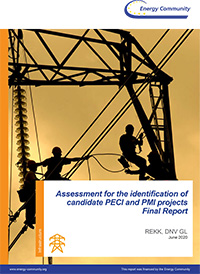
-
06/2018: Assessment of candidate PECI and PMI projects
June 2018: Assessment of candidate Projects of Energy Community Interest and Projects for Mutual Interest
For the assessment of candidate projects the consultant developed an assessment methodology, building on its previous assessments of infrastructure projects on behalf of the Energy Community in 2013 and 2016, as well as taking into account the methodology applied for the latest selection of EU Projects of Common Interest (PCIs) under the same Regulation as well as the methodologies for the assessment of network infrastructure projects developed by ENTSO-E and ENTSOG.
The report provides an overview of all submitted investment projects as well as the modelling assumptions that have been made and agreed to with the PECI Groups, presenting detailed results and rankings of the projects. Based on the best estimate ranking and the additional information provided by the sensitivity analysis, the Groups were able to make an informed decision on the preliminary list.The 16th Ministerial Council adopted the list of projects of Energy Community interest in November 2018.
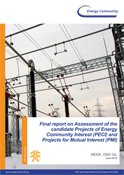
Renewable energy
-
04/2024: Post War Development of the Renewable Energy Sector in Ukraine
April 2024: Post War Development of the Renewable Energy Sector in Ukraine
The war has inflicted significant damage upon Ukraine's renewable energy sector, abruptly halting its pre-war momentum and plunging it into a state of profound disruption. This grim reality underscores the urgent imperative to prioritize the sector's revitalization as a cornerstone of Ukraine's post-war economic and environmental reconstruction. While renewables present a beacon of hope in this bleak landscape, their resurgence hinges upon the establishment of critical preconditions of a regulatory, institutional, and financial nature, thereby unlocking their full potential to drive a sustainable and prosperous future for Ukraine. The study presents over 20 recommendations and reiterates on the key issues and best ways to implement. 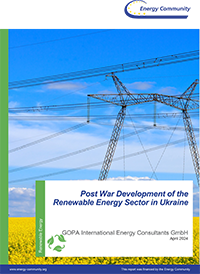
-
12/2020: Modalities to foster use of renewable energy sources in the transport sector
December 2020: Modalities to foster use of renewable energy sources in the transport sector by the Energy Community Contracting Parties
The Energy Community has started considering the implementation of the revised Renewable Energy Directive (EU) 2018/2001 (RED II) on the promotion of the use of energy from renewable sources. Assuming for this study, that the provisions of RED II are transposed into the laws of the Contracting Parties without changes, the consultants develop roadmaps for each Party towards achieving the 2030 target for renewables in transport in accordance with RED II.
Energy consumption in transport is anticipated to grow; in many, anticipated growth is stronger by 2030 than RES-T consumption for target compliance. The level of renewable energy consumption in transport in 2018 varies between the Parties from 0 to 1.6%. In all Parties, sufficient options are available to achieve RES-T targets compliant with RED II, so the study findings.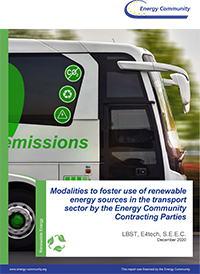
Policies for RES-T should be based on three pillars: biofuels, electricity and hydrogen. For biofuels, RED II shifts the focus away from crop-based biofuels towards advanced biofuels: those made from a defined list of waste or residue-based or cellulosic feedstocks.
Energy efficiency
-
07/2014: Impact assessment of the Energy Efficiency Directive (2012/27/EU) for the Energy Community
July 2014: Impact Assessment of the Energy Efficiency Directive (2012/27/EU) for the Energy Community
-
02/2012: Energy Efficiency in buildings in the Contracting Parties
February 2012: Energy Efficiency in Buildings in the Contracting Parties of the Energy Community
Environment
-
11/2013: Study on the need for modernization of large combustion plants
November 2013: Study on the need for modernization of large combustion plants in the Energy Community
-
03/2011: Study on the potential for climate change combating in power generation
March 2011: Study on the potential for climate change combating in power generation in the Energy Community
Customer
-
02/2013: Development of best practice recommendations for customer switching
February 2013: Development of best practice recommendations for customer switching in the Energy Community
-
04/2012: Recommendations for quality of service data collection, reporting and auditing
April 2012: Recommendations for quality of service data collection, reporting and auditing in the Energy Community
-
02/2012: Development of best practice recommendations for smart meters rollout in the Energy Community
February 2012: Development of best practice recommendations for smart meters rollout in the Energy Community
Statistics
-
10/2013: Implementation of the energy statistics acquis
October 2013: Implementation of the energy statistics acquis
Competition
-
04/2011: State aid rules and effectiveness of State aid control in the electricity sector
April 2011: State aid rules and effectiveness of State aid control in the electricity sector under the Energy Community Treaty
The study covers State aid and its control in the electricity sectors (generation, transmission, distribution, supply, trade and consumption) in seven of the Contracting Parties to the Treaty.
The study consists of three parts. There firstly is a description of the current legal and institutional framework of each Contracting Parties for the monitoring of State aid measures granted at national level, including the specific powers and enforcement practice of the relevant national authorities. There also is a comprehensive inventory of State aid measures adopted by the authorities of the Contracting Parties.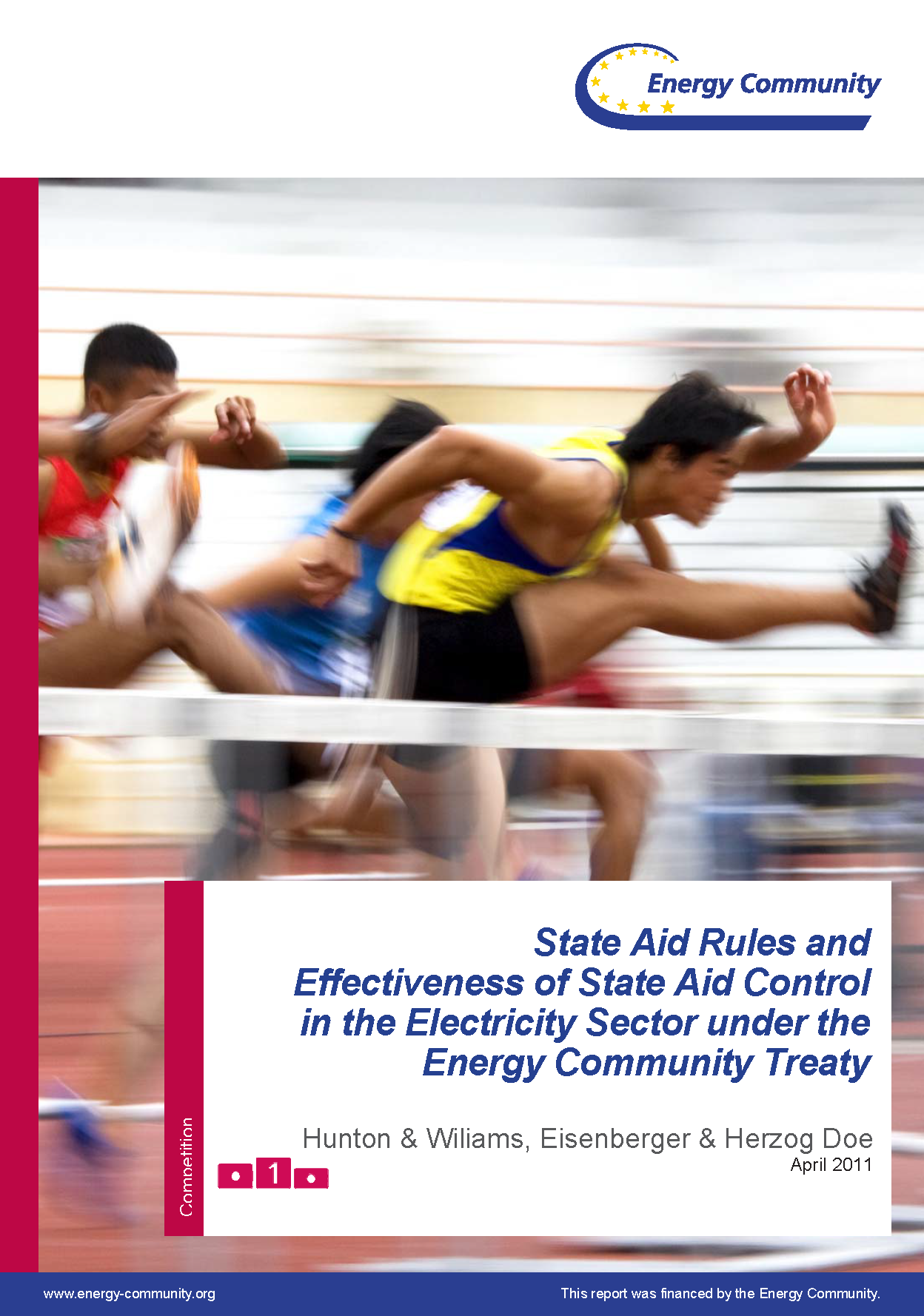
The Part III assesses and evaluates the legislative framework relating to State aid in the electricity sector and its practical application in the territory of each of the Contracting Parties included in the study. Benchmark for the evaluation is the law and practice of the EU.
Cross cutting
-
12/2021: Study on energy poverty
December 2021: Study on addressing energy poverty in the Energy Community Contracting Parties
The study estimates the number of energy poor households, analyses the legal frameworks for the protection of vulnerable and energy poor consumers and investigates the main drivers and causes of energy poverty in the Contracting Parties. Efforts to address energy poverty are part of the Energy Community Just Transition Initiative to ensure that the move away from fossil fuels in the Contracting Parties is socially just, in the interest of women, workers and entire communities.
The study found that while all Contracting Parties have definitions of vulnerable customers, that definition is closely related to the social (income) and health status. Other aspects and drivers of energy poverty, such as the energy efficiency of homes, gender and energy needs, are not considered. This means that not all energy poor households are getting the support they need.

-
12/2019: Study on cybersecurity in energy sector
December 2019: Study on cybersecurity in the energy sector of the Energy Community
The starting point of this study was an assessment of the current state of development of the Contracting Parties with respect to the EU cybercrime legal framework (Budapest Convention), which forms a basis for cybersecurity legislation by defining criminal law offences and associated provisions and thus enables prosecution of cybercrime actors. Special attention has been placed on critical infrastructure and essential services identification criteria, as well as on national strategies on the security of network and information systems applicable to both the electricity and gas sectors.
An overview for each Contracting Party was prepared based on the collected and consolidated information. International standards, training programs and cooperation initiatives as enablers for energy-related cybersecurity capacity building, were indicated at a country level.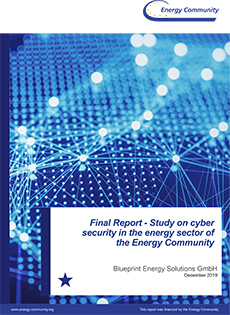
The report presents a set of recommendations based on the assessment of gaps between the Contracting Party legislation and EU-wide energy sector cybersecurity legislation and standards. Energy Community-wide and Contracting Party-specific cybersecurity risk assessment were addressed by these recommendations. -
06/2019: Study on 2030 overall targets for the Energy Community
June 2019: Study on 2030 overall targets for the Energy Community
The core objective was to further develop the methodology and to conduct a quantitative assessment of pathways for achieving calculated 2030 energy efficiency, RES and GHG emissions reduction targets that can be expected under aligned framework conditions in the Contracting Parties.The report describes the methodologies, data and key assumptions for deriving 2030 energy and climate targets. A set of options that can be used for target setting has been derived within each respective field and for overall GHG emission reduction.
The study concludes that setting GHG targets is strongly needed due to several highly GHG emitting industrial processes in the Energy Community region. Setting 2030 GHG emission targets is the beginning of a convergence process towards the EU long term (i.e. 2050) target that needs to take into account countries current and historic emissions pro-files and the strong need for economic recovery.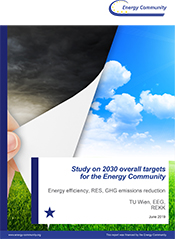
Several approaches exist to define an energy efficiency target for the Energy Community in 2030 as well as at the level of individual countries. Different approaches compared to energy efficiency are proposed for establishing 2030 targets for renewable energies. Here it appears wise to mimic the EU approach taken, following two steps for determining RE targets in the 2030 context. The Study claims that EE target has a strong impact on the feasibility of target achievement in RE and in GHG mitigation. Thus, an unambitious EE target challenges the achievement of RE targets and endangers the feasibility of GHG limits. In the same way, an unambitious RE target would also limit the contribution of renewables towards GHG emission reduction.
Historic documents
Pursuant to the Secretariat's documents policy, no study older than seven years is displayed online (presently 2017 publication date or older). Whist these historic documents have been moved into archive, the Secretariat maintains records of its past studies.
Access to the past studies is granted upon request.


